欧洲地区后矿业空间转型的设计方法
克里斯塔·莱歇尔,卡罗拉·S·诺伊格鲍尔/Christa Reicher, Carola S. Neugebauer
王单单 译/Translated by Dandan Wang
1 引言
后工业时代的结构变化及其对社会造成的复杂影响是一种全球性现象。矿业集群的衰落和转型便可作为一个例子。后矿业转型是欧洲空间发展的一个长期的、多层次的、空间差异化的主题。然而,对于欧洲地区的空间实践和研究来说,了解这些转变过程以及寻找有前景的方法来构想、设计和建立可持续的后矿业地区仍然是一项重大挑战。
在这方面,本文论述了从欧洲这一领域吸取的经验教训,通过对应用于后矿业地区的“设计和制作”以及改造的方法进行讨论而得出结论。其中,规划方法是仅次于其他方法的一项重要干预方式:如举办国际建筑展(IBA)等区域和策略规划方法对于在后矿业地区提高可居住性以及支持更广泛的社会经济发展非常有价值。然而,这种成功也受到更多因素的制约。以下就以德国鲁尔区为例简要说明上述结论。
2 鲁尔区——转型经历
鲁尔区的适航性——铁路建设作为早期钢铁生产和蒸汽机使用的前提和市场,使得深层开采为19世纪鲁尔区高度工业化的硬煤开采奠定了基础。克虏伯、蒂森和霍什等少数家族企业对于此类发展有重要影响[1]15。中世纪的杜伊斯堡和多特蒙德发展为工业城市,经历了数次国际移民潮。20 世纪上半叶,随着硬煤开采的扩张,出现了化工工业、国防工业、电力等新兴产业。他们成为了钢铁制造业多产的第二支柱,同时促成了如德古萨、德国莱茵集团和鲁尔煤矿公司等大公司的诞生。1956 年,有49.4 万名员工在采矿业工作——鲁尔地区的煤炭和钢铁工业在二战后经历了最后的鼎盛时期[1]。然而,产业集群也造成了严重的环境破坏,大量的空气和水被污染,该地区在社会上留下了极其负面的形象。
在鲁尔地区,1958 年的煤炭危机预示着后矿业时代的到来。煤炭危机导致了第一批煤矿产业的倒闭和裁员:“到了1976 年,煤矿数量从148 座减少至35 座;产量减半,劳动力降至15 万人”[1]28。然而,由于二战后西德的重建热潮,钢铁行业仍在煤炭危机期间持续发展。1980 年代,其他国家的新型竞争产品和替代材料(如塑料)以及1974 年和1975 年的世界经济危机共同引发了一次钢铁危机。鲁尔地区内硬煤开采与钢铁行业的衰退和结构变化[2]535就此开始:它开始从工业向服务业以及后来的信息经济过渡,逐渐对该区域的人口、城市和环境发展产生影响。
结构改革的第一阶段(1958-1990)主要伴随着大公司的合理化(过程优化)及矿山、工厂的首次倒闭和工人失业。1974 年起,国家开始补贴煤矿开采。此外,该地区不仅致力于为青年人提供更好的帮助和支持,同时也考虑到了收入困难的矿工家庭:作为结构性政策项目的产物, 用于提升劳动力水平并推动市场经济的第一批大学在1965年建立。
3 规划未来阶段:经济政策和国际建筑展
在行业衰退阶段之后,1990-2000 年这10 年的特点是“组织与规划未来”。在经济方面,1990年代末的钢铁和煤炭部门进行了进一步重建:这些公司在产品范围扩大、产品革新、企业合并及集中场地等方面做出调整。大型企业对新产品和新场地进行投资,而新增的失业岗位也正逐渐被合格的服务行业与新型工业分支(如物流、微系统技术、信息技术和生物医学)创造的新岗位所填补。该地区当时正走向信息经济。国营企业是这一变革的主要推动力,鲁尔地区经济发展的示范项目“多特蒙德项目”1)便是一个例子。
如今,由于大学、研究机构、公共基金与传统或本土大公司的投资之间有了新的密切合作,使得该地区的“知识型服务和产品不断提升”[1]29。尽管新产业还未完全弥补矿业和钢铁产业造成的裁员影响,“服务业似乎已经成功地赶上了整体经济发展”[2]543。
埃姆舍尔公园国际建筑展以“探讨旧工业区的未来”为座右铭而建, 坐落在杜伊斯堡和博格坎门之间的埃姆舍尔河沿岸——东西延伸约 70km,南北延伸 15km。总的来说,IBA 将自己看成一种“综合区域发展”的方式。在这种方式里,该区域的生态和文化复兴被视为经济发展的先决必要条件。尊重工业遗产,以文化应用助力,对当代发展趋势持开放态度。
高炉、厂房、井架、煤矿、煤气罐和焦化厂是工业时代最引人注目的建筑特色。随着矿业危机的爆发和结构的逐步变化,这些建筑失去了其原有使用价值,并遗留下如何处理这类工业遗产的问题。IBA 埃姆舍尔公园的策略是通过赋予工业用地新功能,将其发展成鲁尔地区转型的动力来源。IBA 包括100 多个项目;部分项目在本期专辑中会有介绍。
矿业同盟的前煤矿和焦化厂被拆除,并逐步改造为鲁尔博物馆——现已成为联合国教科文组织的世界遗产,吸引着全球的目光。在IBA 成为促进鲁尔地区工业文化发展最重要的国内外里程碑后, 整个矿业同盟于2001 年被列入联合国教科文组织的世界文化遗产名录中。非但不拆除奥伯豪森煤气罐,反而将其内部高度超过100m 的空间视为展览空间,做出这样决定需要有超前的想象力与开拓新领域的勇气。
1 Introduction
Post-industrial structural change with its complex consequences for society is a global phenomenon. The decline and transformation of mining clusters is an example for that. Post-mining transformations are a longstanding, multi-layered and spatially differentiated theme of European spatial development. Yet, the understanding of these transformation processes and the search for promising approaches to conceive, design and build sustainable post-mining regions are still a topical challenge for spatial practice and research in Europe.
This contribution proposes lessons learnt from European experiences in this regard. It concludes with discussions on approaches for the"design and making" of post-mining regions and transformations. Therein, the planning approach constitutes one important intervention next to others: Regional and strategic planning approaches like the International Building Exhibition (IBA) are valuable to increase the livability and to back-up the broader socio-economic developments in postmining regions. Yet, the success is conditioned by many more factors. In the following pages, we refer to the Ruhr region in Germany to illustrate briefly these conclusions.
2 The Ruhr area - experiences of change
The navigability of the Ruhr, the railway construction as a prerequisite and market for the beginning steel production and the use of steam engines, enabling the deep mining laid the bases for the highly industrial hard coal mining in the Ruhr region in the 19th century. Few entrepreneur dynasties such as Krupp, Thyssen and Hoesch influenced these developments importantly[1]15. The medieval cities of Duisburg and Dortmund grew into industrial cities, experiencing several waves of (international) immigration. The expansion of hard coal mining in the 1st half of the 20th century was accompanied by new industries such as the chemical and defense industries and electricity generation. They became the productive,second mainstay of the steel manufacturers and were the birth of further large companies such as Degussa, RWE and Ruhrkohle AG. The coal and steel industry in the Ruhr region experienced its last heydays after the World War II, when 494,000 employees worked in mining in 1956[1].The industrial cluster caused, however, also severe environmental damages with massive air and water pollution, coming along with a very negative image of the region.
In the Ruhr region, the coal crisis in 1958 heralded the post-mining age. The coal crisis led to the first closures of mines and job cuts: "By 1976 the number of mines had fallen from 148 to 35; production had halved and the workforce had dropped to 150,000"[1]28. During the coal crisis,however, the steel industry still grew due to the reconstruction boom in West Germany after the World War II. Here the crisis only came in the 1980s with new competing products from other countries and alternative materials (e.g. plastics), as well as in connection with the world economic crisis of 1974/1975. In the Ruhr region, a sectoral decline and structural change[2]535in hard coal mining and the steel industry had thus begun. It began the transition from the industrial to the service and later information economy with consequences for the demographic, urban and environmental development in the region.
The first phase of structural change (1958-1990) was mainly accompanied by rationalisations in large companies (process optimisation), by the first closures of mines and plants as well as by unemployment. The state started to subsidise coal mining in 1974. In addition, efforts were made to provide better support for young people in the region, also in view of the difficult income situation of the miners' families: The first universities were founded in 1965 as a structural policy programme to promote the qualification of workforces in conjunction with market-economy impulses.
3 A phase of setting the course: Economic policy and the International Building Exhibition
After this phase of sectoral decline, the decade between 1990 and 2000 was marked by "structuring and setting the course". In the economic sphere,at the end of the 1990s, the steel and coal sectors underwent further restructuring, to which the companies responded with expanded product ranges and product innovations, mergers and further site concentrations. The large companies invested in the new products and locations, while the renewed job losses were increasingly replaced by new jobs in the qualified service sector and in new industrial branches (such as logistics, microsystem technology,information technology and biomedicine). The region was now heading for an information economy. The public sector was a major driver of this change as the "Dortmund project"1)- a showcase project for economic development in the Ruhr region - exemplifies.
Today, "knowledge-based services and products are on the advance"[1]29in the regions as a result of the new, close cooperation between universities,research institutions, public funding and investments of the old, indigenous big companies.Even though the new industries have not (yet) fully compensated for the job reduction in the mining and steel industry, "the services seem to have succeeded in catching up with the overall economic development"[2]543nevertheless.
Apart for this economic reorientation, the second phase of the post-mining transformation was marked by the strategic emphasis on increasing the environmental qualities and the livability in the Ruhr region. Both had been severely impaired to date. To this end, the International Building Exhibition (IBA) Emscher Park was decisive - a strategic instrument to drive, design and structure the process of spatial transformation in the region in a cooperative and flexible, yet integrated manner.Thanks to the international building exhibition,running for ten years from 1989 to 1999, the internal and external perception of the region has changed fundamentally. The transformation process has developed a worldwide appeal to media with remarkable projects of industrial culture.
The IBA Emscher Park worked under the motto "Workshop for the future of old industrial regions" in a space - along the river Emscher between Duisburg and Bergkamen - with an eastwest extension of about 70km and a north-south extension of 15km. Overall, the IBA saw itself as a way of "integrated regional development" in which the ecological and cultural renewal of the region was regarded as an essential prerequisite for economic development. The industrial heritage was to be treated respectfully and strengthened by cultural uses with an openness for contemporary trends.
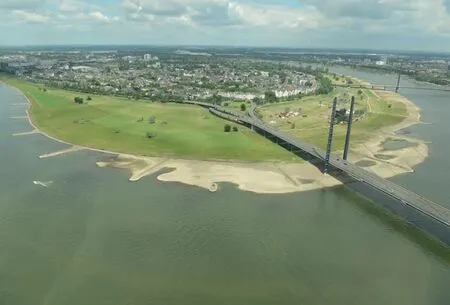
1 从杜塞尔多夫的莱茵塔看到的景象/View from the Rheinturm in Düsseldorf
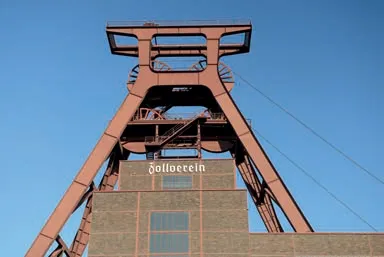
2 联合国教科文组织世界遗产“关税同盟煤矿工业建筑群”/The UNESCO world heritage site "Zeche Zollverein"

3 国际工业遗产路线,鲁尔之旅/Ruhr tourism - the international route of industrial heritage
工业区的改造还包括核心城市之间的“景观改造”,由于矿业、煤炭、钢铁工业的发展,这些城市之间的景观发生了巨大变化。在这一背景下,“工业自然”“工业景观”等新术语应运而生, 力图寻找工业景观的独特性和真实性。IBA 还有类似将整个工业厂房的大部分都置于自然荒野中等尝试,如汉萨焦化厂以及由整座高炉工厂改造而成的北杜伊斯堡市景观公园。
IBA 埃姆舍尔公园的项目成功地让“工业文化”一举成为当今整个地区的核心文化根源。对于鲁尔区的进一步发展来说,这种对区域特征的可持续贡献非常宝贵。
该项目通过改造工业遗产用地并将其作为范例,使其变成鲁尔地区觉醒和转型的推动力。这一策略在项目完成后仍不断地得到认可。作为一种新型文化节日和机构,“鲁尔三年展”以艺术节日的身份直接效仿了IBA 埃姆舍尔公园。坐落在波鸿的韦斯特公园的百年厅,于2002 年被翻新成一座戏剧和音乐表演的节日剧院。
在IBA 埃姆舍尔公园建成之时,工业文化已经成为鲁尔旅游的核心要素。随后,它又以欧洲文化之都“鲁尔2010”的形式进一步发展。在“文化影响变革——变革影响文化”的口号下,该地区不仅以令人印象深刻的文化项目呈现了自我,还充当了工业文化的建筑灯塔,如多特蒙德U 博物馆,既是艺术中心又是创意中心。
综上所述,鲁尔地区的例子说明了“国际建筑展”这种方式不仅能将鼓舞人心的设计项目和工业文化等创新理念作为一种国际现象进行推广,还具有很强的模仿性。此外,它还可以激发一系列后续行动,促进变革,如联合国教科文组织世界遗产标识、欧洲文化之都倡议或目前正在规划的2027 年国际花园展(IGA)等。IBA 埃姆舍尔公园项目协调并激发了各种其他项目、想法和概念, 以推动该地区开采后的可持续发展。
因此,IBA 埃姆舍尔公园项目的成果随后得到了区域规划的支持——成为了鲁尔地区3 个行政区具有法律约束力的规划;而该项目所唤醒的区域意识也反映在当今的总体规划中,如“埃姆舍尔景观公园”和“新埃姆舍尔山谷”。与此同时,IBA 还帮助建立了鲁尔区旅游和区域经济发展机构,并参与了将鲁尔区昔日的污水渠改造成埃姆舍尔城市河流景观的大项目。
联邦政府、德国国民政府和欧盟的结构政策与财政支持对于鲁尔地区尚未完成、正在进行的后矿业转型的成功至关重要。
仅在IBA 埃姆舍尔公园项目的框架内,就有25 亿欧元的公共资金投入该地区,另外还有用于促进商业、研究和创新的公共资金。
除此之外,私营企业,尤其是总部位于此地的老牌大公司,在创新(参考多特蒙德项目,见44 页)以及对环境与生活质量的修复和提升方面进行了重要投资(例如蒂森公司对福克旺博物馆的投资)。
目前由北莱茵-威斯特法伦州发起并执行的鲁尔会议正在寻求一种新的方法来设计和改善后矿业转型的下一阶段。
4 经验教训
针对鲁尔地区的这一转型,参考欧洲其他后矿业时代的经验[3],我们可以发现一些有趣的相似之处。这些相似之处均体现在克服危机的方法选择上。我们将在下面对其进行讨论。
首先,值得一提的是欧洲地区的经济前景体现在第三产业的增长(即旅游业等服务业的发展)以及新兴产业分支的发展等两方面。这些又会在未来成为拥有高增长率、高价值服务的重点。建立并促进研究机构和商业公司之间的联系与合作关系是重中之重。在可持续发展行业里新就业机会的产生是这片区域能否在未来的稳定建设与可持续发展中取得成效的决定性因素[4]。
Blast furnaces, machine halls, winding towers,collieries, gasometres and coking plants are among the most striking architectural features of the industrial era. With the onset of the mining crisis and the progressive structural change, these buildings lost their use and raised the question of how to deal with this industrial heritage.IBA Emscher Park's strategy was to develop the industrial site into a source of impetus for change in the Ruhr area by converting it to new uses. The IBA comprise more than 100 projects; some of them are presented in this theme issue here.
The former colliery and coking plant of Zollverein, which had been abandoned for demolition and step by step transformed into the Ruhrmuseum, has become a UNESCO World Heritage site with a worldwide appeal. The inclusion of the entire Zollverein ensemble in UNESCO's World Cultural Heritage List in 2001 immediately after the IBA represented the most important national and international milestone for the promotion of the industrial culture in the Ruhr region. The decision not to demolish the Oberhausen Gasometre, but to see the potential for a possible exhibition space with an interior height of over 100m, required imagination and courage in advance to break new grounds.
The reconstruction of the industrial region also included the "reconstruction of the landscape"between the core cities, which was subject to serious changes due to mining and the coal and steel industry. In this context, new terms such as "industrial nature" and "industrial landscape"emerged, which sought to trace the unique and authentic nature of the industrial landscape. IBA's experience also includes experiments such as the idea of leaving large parts of an entire industrial plant to the wilderness of nature, as can be seen at the Hansa coking plant or during the transformation of an entire blast furnace plant into the Duisburg-Nord Landscape Park.
With its projects, the IBA Emscher Park has succeeded in making "industrial culture" the central cultural root of the entire region today. This sustainable contribution to regional identity has been invaluable for the further development of the Ruhr area.
The IBA Emscher Park's strategy of developing industrial heritage sites into impulses for the awakening and transformation of the Ruhr region by converting them and using them as examples is continuously confirmed even after they have been completed. As a new cultural festival and institution, the "Ruhr Triennale" as a festival of the arts directly followed the IBA Emscher Park. The"Jahrhunderthalle" in the Westpark in Bochum was renovated in 2002 as a festival theatre for drama and music performances.
Already at the time of the IBA Emscher Park,industrial culture had the function of a central element of Ruhr tourism. This has been further expanded with the format of the European Capital of Culture "RUHR.2010". Under the motto "Change through Culture - Culture through Change", the region has not only presented itself with a dazzling cultural programme, but has also implemented further architectural lighthouses of industrial culture such as the "Dortmunder U" as a centre for art and creativity.
In sum, the example of the Ruhr area illustrates how the instrument "International Building Exhibition" cannot only promote inspiring design projects and innovative concepts such as industrial culture as an international phenomenon with great imitation. Moreover, it can initiate a chain of followup initiatives for change such as the UNESCO World Heritage labelling, the European Capital of Culture initiative or the International Garden Show (IGA)2027, which is currently under planning. The IBA Emscher Park has coordinated and evoked various projects, ideas and concepts for continuing with the region's sustainable development after mining.
Therefore, the achievements of the IBA Emscher Park were subsequently supported by the regional plans - as legally binding plans of the three administrative districts of the Ruhr area. The regional awareness promoted by the IBA Emscher Park is evident today in master plans such as for the"Emscher Landscape Park" and the "New Emscher Valley". The IBA thus also contributed to the establishment of the Ruhr tourism and the regional agency for economic development as well as to the big project of converting the former sewage canal of the Ruhr region into the urban river landscape of Emscher.
The structural policy and the financial supports of the federal state, the German national government and the European Union are also essential for the success of the still unfinished and ongoing post-mining transition in the Ruhr region. Only in the framework of the IBA Emscher Park, two and a half billion euros of public funds were invested in the region, plus the public funds for promoting business, research and innovation.Apart from that, the private sector - in particular the old big companies with the headquarters in the region - invested importantly in innovation (cf. the Dortmund project, page 44) and in the repair and enhancement of environmental and life quality (e.g.Thyssen companie's investment in the Folkwang Museum). The current Ruhr Conferences, which are initiated and carried out by the federal state of North-Rhine Westphalia, are seeking currently a new way to design and shape the next phase of postmining transformation.
4 Lessons learnt
Against this body of transformation efforts in the Ruhr region and in view of other European post-mining experiences[3], we can reveal interesting similarities with regard to the chosen and successful approaches to overcoming crises. We put them up for discussion in the following.
So first of all, we would like to point out that European regions find their economic perspectives both in the growing tertiarisation, i.e. in the development of the service sector including the tourism industry, and in the development of new branches of industry, which in turn are the anchor points for further, higher-value services with potential growth. The initiation and promotion of networking and cooperation between research institutions and business enterprises is central to this. The creation of new jobs in sustainable sectors is the decisive factor for the stabilisation and future sustainable development of the regions[4].
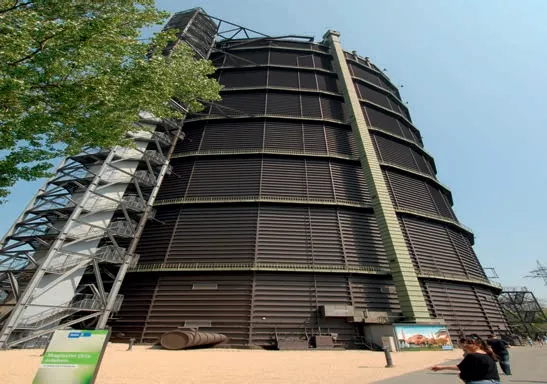

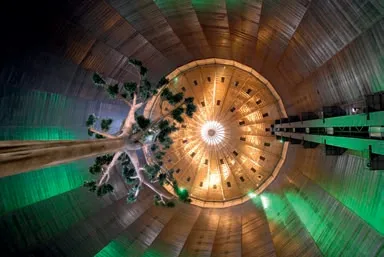
4-6 奥伯豪森城中的煤气罐/The gasometer in the city of Oberhausen
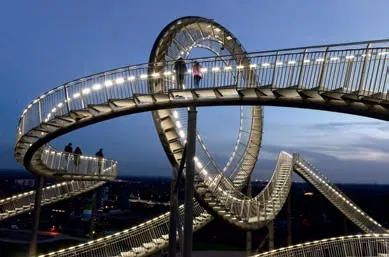
7 杜伊斯堡形似过山车的雕塑“老虎与乌龟”/The rollercoaster sculpture "Tiger & Turtle" in the city of Duisburg
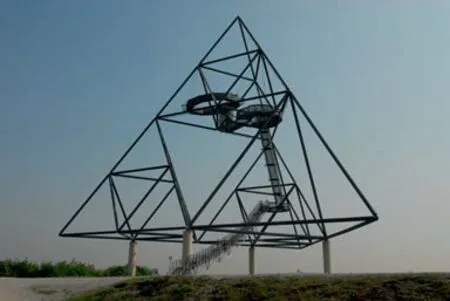
8 博特罗普的四面体,是一个位于原矿渣堆的观景平台/The tetraeder in Bottrop - viewing platform on a former slagheap
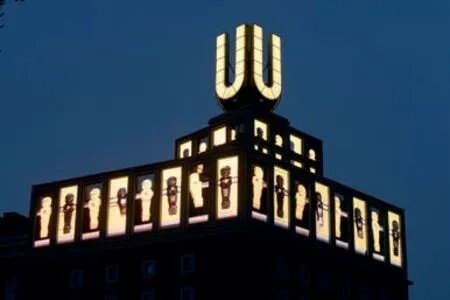
9 多特蒙德U博物馆,艺术中心兼创意中心/The "Dortmunder U" - the new centre of arts and creativity
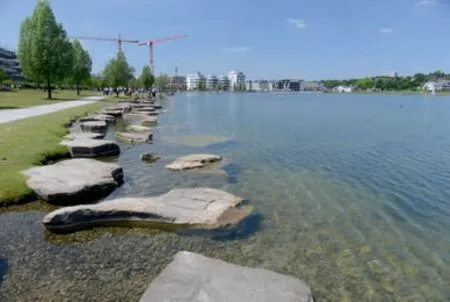
10 凤凰湖/PHOENIX lake(摄影/Photo: Uwe Grützner)
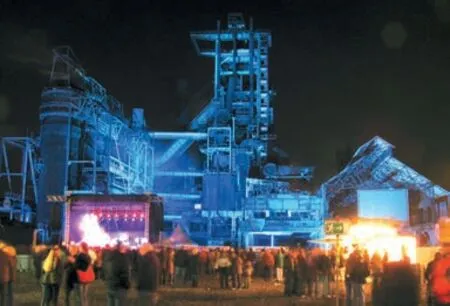
11 多特蒙德凤凰西区/PHOENIX West in Dortmund(4-9.11图片来源/Sources: Christa Reicher)
第二,欧洲后矿业地区采用了改善区域和当地生活质量的方法——在住房、服务、文化、教育和娱乐方面进行环境改造以及生活环境的改善。这种方法被普遍认为是增加该地区住宅和商业场所吸引力的先决条件和决定性切入点。这不仅得益于煤炭和钢铁减产带来的环境污染的减少,同时还得益于针对性投资、以需求为导向和以未来为导向的振兴措施以及荒地与土地多元化新用途的升级。
在这种背景下,各区域的第三种通用方法是:通过大型设计项目、(国际)标签、活动和节日(例如联合国教科文组织世界遗产名录、欧洲文化之都等),将矿业遗产诠释成文化遗产及其运用与表演。通过这种方式,矿业遗产可以帮助改善旧工业地区的外在感观(图像),加强居民的自我价值感,巩固他们与居住地的关系,并在这以知识和服务为基础的社会时代里支持各区域内经济的重新定位。
与此同时,这些经验表明后矿业地区的重新定位与可持续发展需要大量的公共投资与强有力的政策扶持。在研究、教育、基础建设、环境整治、城市建设以及遗迹保护方面需要的是公共投资。针对空间差异化的资金使用和投资迫在眉睫,需满足各个城市的自身需求,而不是一味地进行“万能药”式的无差别投资(这会造成一系列的负面影响)。鲁尔地区的例子同时还展现了与总部位于当地且资金雄厚的大型企业合作而带来的巨大优势。
“政治行政领域的质量”[5]226应该是后矿业地区稳定与发展的最后一个重要因素。它是凌驾于所有有关(跨行业)整合但又快速、灵活且有效的手段(即措施、项目导向性规划和监管),也就是当地小尺度的异化潜力与行动者的指南针。欧洲的煤矿和钢铁地区为此使用各种非正式的手段来实现区域发展理念,比如厄尔士山脉的煤矿和钢铁区[4]。在实践模仿和科学理论方面,“与众不同”是IBA 的方法。该方法首次被用于鲁尔区的后矿业问题上。综上所述,这是一种适当的方法:以鼓励不同的行动者,收集项目创意和概念,将其落实到环境与生活质量的可持续改善中。不过,它的转型潜力取决于它的精确设计以及上述所有因素和干预措施的相互作用。□
Secondly, European post-mining regions take the approaches of improving the regional and local quality of life in the form of environmental redevelopments and improvements to the living environments in terms of housing, services, culture,education and recreation. This approach is widely acknowledged as precondition and decisive entry point to increase the regions' attractiveness as residential and thus business locations. And this implies more than just to benefit from decreasing environmental pollution due to the decline of coal and steel industries, but the targeted investments and measures of demand-oriented and futureoriented revitalisation and upgrading of wastelands and sites for various new uses.
In this context, the third common approach of the regions stands: the reinterpretation of the mining legacies into cultural heritage and its exploitation and staging through large-scale design projects, (international) labels, events and festivals(e.g. UNESCO World Heritage; European Capital of Culture). In this way, the heritage of the mining industry can help to improve the external perception(image) of the old industrial regions, strengthen the self-esteem of the inhabitants and their ties to the place, and consequently support the economic reorientation of the regions in the age of knowledge and service-based societies.
The experiences show, moreover, that the reorientation and sustainable development of postmining regions require massive public investment and strong political will. Public investments are needed in the fields of research and education,infrastructure, environmental revitalisation, urban development and monument preservation. This urgently involves the spatially differentiated use of funds and investments, adapted to the specific potentials and needs of municipalities, and not"one-fits-all" - type investments, which can have negative consequences. The example of the Ruhr regions illustrates, moreover, the enormous advantage of being able to cooperate with large and financially strong enterprises with headquarters in the region.
The "quality of political-administrative regime"[5]226appears to be a last, important factor for the successful stabilisation and development of post-mining regions. It is above all a matter of integrated (cross-sectoral), yet fast, flexible and effective (measure and project-oriented)planning and monitoring, which refers to the region's small-scale differentiated potentials and actor constellations. The European coal and steel regions use various informal instruments for this, the Erzgebirge coal and steel region, for example, the Regional Development Concept[4].Outstanding - in terms of practical imitation and scientific theorisation - is the instrument of the International Building Exhibition (IBA), which was used for the first time in the Ruhr region for the post-mining problem. As outlined above, it is a suitable instrument to encourage diverse actors,to bring together project ideas and concepts and to implement them for a sustainable change of environmental and life qualities. Its transformative potential depends, however, on its precise design and the interplay of all factors and interventions mentioned above.□
注释/Note
1) 政治、商业和科学间的跨学科合作与支持是其特点。1997 年,多特蒙德政府、克鲁普-霍斯奇和蒂森以及多特蒙德、杜伊斯堡等城市和工会通过谈判,提出了在多特蒙德建立新高科技产业集群的想法。谈判的结果是:克鲁普-霍什和蒂森两家公司合并;在1990年代末关闭多特蒙德的钢铁基地,转而将杜伊斯堡作为鲁尔区唯一的现代化钢铁基地。作为回报,行业承诺共同融资并实现“多特蒙德作为商业中心的战略理念与愿景”:在软件、信息技术、电子商务、微系统技术、生物技术和物流等领域建立新的集群。其目标是在2010年之前创造70,000个新工作岗位,以补偿多特蒙德近年来失去的80,000个工作岗位。欧盟、联邦、州和城市的2亿欧元资金也流入了该商业项目,用于旧工业用地向新型办公及商业园区、住宅场所、娱乐和休闲场所的转换和升级。截止至2007年,在该项目的主要影响下,多特蒙德拥有了720家IT公司、662家物流公司、33 家微米和纳米技术公司,创造了41,000个新职位。/It is characterised by the interdisciplinary cooperation between politics, business and science.The idea of establishing a new high-tech cluster in Dortmund was born in 1997 from negotiations between the state government, Krupp-Hoesch and Thyssen, the cities of Dortmund, Duisburg and the trade unions. The result of the negotiations was that the companies Krupp-Hoesch and Thyssen merged and at the end of the 1990s finally closed down the steel location Dortmund in favor of Duisburg as the sole and modernised steel location in the Ruhr area. In return, industry undertook to develop and co-finance"a strategic concept and vision for Dortmund as a business location": the establishment of a new cluster in the software, information technology, e-commerce,microsystems technology, biotechnology and logistics sectors. The aim was to create 70,000 new jobs by 2010 as compensation for 80,000 jobs lost in Dortmund in recent years. 200 million euros in EU, federal, state and city funds also flowed into this business development project, which was accompanied by conversions and upgrades of old industrial sites to new office and business parks, residential uses, recreation and leisure.In 2007 there were - mainly as a result of this project -720 IT companies, 662 logistics companies, 33 microand nanotechnology companies with 41,000 new jobs in Dortmund.

